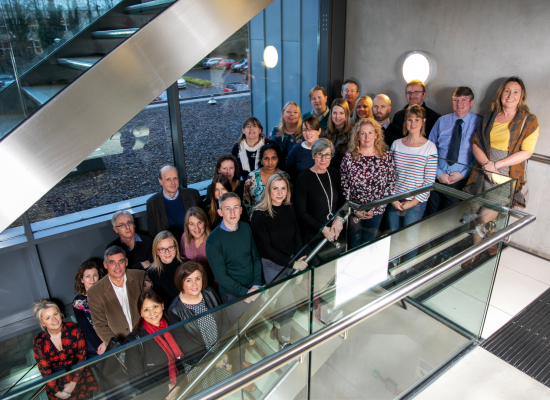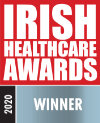Student Final Year Projects 2021 (MSc. in Digital Health Transformation)

It was with great pleasure to recently see the inaugural cohort of students graduate from the MSc. in Digital Health Transformation at the University of Limerick (Sep 2021).
Many of our students have kindly agreed to share a summary of their Final Year Projects (2021). Please see below the projects, including a project summary and a video explaining the project.
HSE Digital Transformation - MSc. in Digital Health Transformation. Student Final Year Projects 2021
Table of Contents
- Care365
- Home Support Service System
- Radiology Clinician Information Dashboard: A feasibility study (Evaluating the use of Artificial Intelligence and Machine Learning for improved radiology order workflows)
- amygDALA
- Development of a Framework to Support Implementation of Video-Enabled Care in Older Persons’ Services
- Patient Portal Appointments Scheduling System
- Interactive Infrastructure Map
- Digital Health Transformation Toolkit
- Enabling Sustainable Virtual Care
- COVID Monitoring App
- eReferrals from General Practitioners to Child and Adolescent Mental Health Services for Intellectual Disabilities
- My Health Passport
- Dashboard Development Process for Radiation Oncology
- Digital INEWS - Vital Signs Automation
- Digitising the Daily Operational Safety Huddle
- Remote patient monitoring beyond the COVID-19 pandemic; Using the NASSS-CAT framework and an adapted version of the complexity assessment tools with a Cystic Fibrosis telehealth team, with consideration for how this approach can help inform how telehealth solutions are introduced, scaled-up and sustained.
Project Name: Care365
Student(s): Yvonne Coughlan, Ricardo Antonio Paco, Aileen Sheehan, Adrian Sweeney, Ella Tyrrell
Description: The Care365 web application allows patients to: (i) Enter their urgent care symptoms; (ii) Understand if they need to attend an Emergency Department (ED)/Minor Injury Unit (MIU)/Self-care and (iii) Choose the most appropriate ED or MIU in their area. Patient symptoms are entered into the application using Infermedica’s artificial intelligence technology. This triage system will provide the patient with one of five outcomes appropriate to their needs (ED, MIU, Ambulance, GP and Self-care). If the patient is triaged to an ED/MIU, Care365 will display the EDs/MIUs in the area, along with distance, wait time data and other important information, thus empowering the patient to make the right choice for them.
Project Name: Home Support Service System
Student(s): Carol McCann, Judy Vahey
Description: The chaos currently experienced throughout Home Support (HS) services across Ireland has been caused by sudden, rapid growth without sufficient investment and utilisation of ICT which poses significant clinical, financial, information and corporate risks. There is national recognition that the HS service requires an integrated ICT system. Our project aim was to identify key requirements for a national system that will address the needs of those interacting with HS services and thereby support the safe, efficient and effective delivery of expanding HS services. We undertook ongoing close consultation with key stakeholders, identified their concerns, needs and wishes, and mapped HS workflow processes and service requirements. This enabled iterative design of key features at each stage of the HS lifecycle.
Project Name: Radiology Clinician Information Dashboard: A feasibility study (Evaluating the use of Artificial Intelligence and Machine Learning for improved radiology order workflows)
Student(s): Eoin O’Malley
Description: This work identified the most frequent queries from clinicians to a radiology department and focused on how this information could be better presented such that communication channels are improved leading to a smoother radiology order lifecycle and ultimately to better outcomes for patients. The most common reasons for additional communication steps were identified through staff engagement. We demonstrated that enquiries relating to the timing of CT studies e.g. when will a scan be performed could be answered using AI/ML algorithms on the Knime analytics platform e.g. the XGBoost algorithm was used to predict if a scan will be performed on the same day with a high degree of confidence (accuracy, AUC and F-measure > 0.9). Another significant reason for additional communication was due to insufficient clinical information being entered at the time of order. Surveys showed many doctors were never taught what makes a good clinical request which can be solved by providing educational tools at the point of need i.e. displaying tips and hints for users within the ordering software.
Project Name: amygDALA
Student(s): Diarmuid Boyle, Niamh Morrin, Jennifer Scargill
Description: Virtual Reality Exposure Therapy (VRET) involves repeated simulated exposure to a feared situation or object with the aim of significantly reducing or eliminating the fear/anxiety response (Opris et al. 2012). It is most effective when combined with Cognitive Behavioural Therapy (Kendall et al. 2019). Despite its efficacy and appeal, research into its use with young people is scarce (Kothgasner, 2020). We have expanded standard VRET in the following ways: (i) Experiencing the Solution: The user is immersed in the problem and the solution: in testing this resulted in a 45% reduction in anxiety. Unlike standard VRET users are exposed not only to external triggers, school environment but the more powerful internal triggers of thoughts and feelings; (ii) Those with the Problem Created the Solution: Co-production using design thinking meant ‘experts by experience’ defined the problem, ideated and prototyped novel solutions; and (iii) No Therapist Required: The VRET is automated and does not require any specific training, so it can be used anywhere by anyone with a VR headset. This project could be the first step in transforming how eMental Health is defined, designed and delivered.
Project Name: Development of a Framework to Support Implementation of Video-Enabled Care in Older Persons’ Services
Student(s): Claire Browne, Leonie Finnegan, Patricia Hynds, John Lavelle, Pamela Lonergan
Description: Video-enabled care (VEC) was rapidly adopted in healthcare settings, initially as a replacement for face-to-face encounters, and has significant potential to offer an enduring complementary role in the delivery of care. This project set out to evaluate implementation of VEC in an older persons’ service (OPS) with a view to developing an implementation framework and guidance to promote and enhance spread and sustainability nationally. The objectives of this project were to: (i) support implementation of VEC in the pilot site; (ii) develop use cases on the deployment of VEC within an older persons’ service; (iii) evaluate success factors and barriers to implementation through engagement with stakeholders involved and (iv) develop a web-based VEC toolkit and resources to support future implementation, spread and sustainability of VEC in this care setting nationally. The web-based VEC implementation toolkit is a comprehensive resource to other OPS nationally that want to implement VEC. The impact of VEC has been predominantly positive in the pilot site studied with residents, relatives and staff highlighting benefits related to enabling connections to families and home environments, improved access to healthcare professionals that are unable to provide face to face consultations at present, greater efficiency in resource utilisation and alternative models of care delivery such as virtual education sessions, student supervision and activities. The use cases developed have detailed current and potential uses for VEC and associated benefits which will support other OPS nationally with implementation. Critical success factors include effective local leadership and clinical champions for practical support, dedicated time to embed in service delivery, adequate ICT infrastructure and the importance of planning changes in workflows and processes.
Project Name: Patient Portal Appointments Scheduling System
Student(s): Sarah Carberry, Mary-Beth Casey
Description: Against a background of high non-attendance at PCT appointments and duplication of data entry, the PPASS - a Patient Portal Appointment Scheduling System is being introduced. This singular platform system will replace a number of platforms being used by Clinicians and Administrative staff thereby reducing duplication and increasing productivity. This system will provide patients with the ability to select appointment date and times that best suit their schedules. This will reduce non-attendance, put patients at the centre of care and increase the number of hours dedicated to patients. The proof of concept pilot is within the Ballymun Primary Care Learning Site for the Physiotherapy department. Phased roll-outs will follow for the other 9 disciplines within the PCT. Patient choice of appointment has been shown to reduce DNA by 53%, while two reminders have been shown to yield a further 19% reduction in DNAs. The ability to recycle cancelled appointments reduced waiting times for clients. This system would save the HSE €14.1 million per annum and Ballymun €112,800 per annum. Over a year, the PPASS Physiotherapy Pilot will save 300 clinician hours currently spent on clerical tasks, allowing a minimum of 300 extra physiotherapy patients to be seen per annum.
Project Name: Interactive Infrastructure Map
Student(s): Niall Ginnity, Mendinaro Imcha
Description: The Health Service Executive (HSE) has approximately 61,000 ICT devices networked across 2,100 sites. Obtaining information on devices at any HSE site was time consuming. Staff had to be temporarily assigned at additional cost to obtain required information. Right information on the right device at the right time became essential. The Interactive Infrastructure Map can provide real-time information on all devices. This map has resulted in the following outcomes: (i) Higher Productivity due to immediate availability of current information; (ii) Improved Compliance by timely updates to licenses, versions, and warranties; (iii) Superior Decisions through timely and targeted actions for support and replacements; (iv) Better Maintenance as the visibility facilitates proactive approaches to ensure operability; (v) Reduced Costs when projects and operations benefit from the enhanced knowledge; (vi) Greater Confidence that risk has been reduced by confirming adherence to best practices and (vii) Quality Care for patients when devices are maintained and secured properly.
Project Name: Digital Health Transformation Toolkit
Student(s): Aislinn Gannon, Sinéad McKiernan
Description: Identifying the need, and designing the toolkit was born out of design thinking. It not only helps to come up with innovative solutions, but also helps to address the exact problems faced by the customer and targets their requirements in a structured manner. Expert designers are solution focused rather than problem focused (Razzouk and Shute, 2012). We wanted it to be simple and user friendly to encourage all HSE employees to innovate. Using the foundation of design thinking, human-centred design with the users of products but also employees of organisations that provide products and services, through surveys, interviews and a workshop to develop the toolkit. The website is structured by the building blocks of digital transformation. They are Strategy & Culture, Engaging Stakeholders, Process & Innovation, Data & Analytics, & Technology. Under these strands, there is some valuable information relating to each and how to carry out a digital transformation project. Various key departments, for example, Digital Transformation Office, OoCIO are hyperlinked for easy access and each page contains links to relevant, documents/strategies and training. It is an informative interactive toolkit containing used case examples, informative blogs and videos. It is endorsed by digital transformation office, Office of Nursing and Midwifery Services Director. The toolkit provides signposts for staff, so that they will develop the skills and confidence to carry out digital transformation project.
Project Name: Enabling Sustainable Virtual Care
Student(s): Joanne Finn, Lillian Hayes, Miriam Roche
Description: Virtual Care is the use of Information and Communications Technologies to deliver remote healthcare. By eliminating geographic barriers, it makes healthcare more convenient, accessible and flexible. It has been identified as a means to improve health outcomes in rural communities, in those suffering from multiple chronic conditions, and in those with limited resources (Caffery et al., 2017). It is also associated with reduced waiting times (Caffery, Farjianand Smith, 2016). Bar privately funded telemedicine services, “Pre-COVID-Ireland” lagged its OECD counterparts like Switzerland, Norway, Australia and Estonia in terms of harnessing the benefits of virtual care (Cravo, 2020). In March 2020, we embarked upon a digital transformation journey that resulted in the facilitation of Ireland’s largest single site rollout of virtual care. Ireland’s largest acute teaching hospital was used as the live test site for this project. It represents a catchment population of 270,000 and hosts over 16 specialist national services that have a country-wide patient base. In 2019, there were 307,905 hospital outpatient attendances, many of which represented long, arduous patient journeys. We set out to leverage digital technology to improve patient access to these hospital services. We enabled 150 staff and teams to deliver 29% of the hospital’s total annual outpatient consultations virtually. This was achieved through an agile “scale and sustain” strategy, a responsive stakeholder engagement plan, and a high support model foundation.
Project Name: COVID Monitoring App
Student(s): Lorraine Smyth
Description: The COVID crisis provided a need for a redefined patient monitoring system. This system saves beds for patients with more severe COVID symptoms. This enables clinicians to provide better care to patients. The way the system works is the clinician prescribes the App/system. The patient is contacted by Patient M Power (the provider), a blue tooth pulse oximeter is sent to the patient and they download the app onto their phone. The pulse oximeter sends the pulse rate and the saturation level to the app which is paired by blue tooth. This is readable on a patient portal in a hospital or in the case of a GP on their laptop and they can monitor the patient. Dropping below 94 on the saturation level is a sign that the patient may be becoming hypoxic and deteriorating. The clinician will get a ping if this happens as will the patient and they will be told to contact each other.
Project Name: eReferrals from General Practitioners to Child and Adolescent Mental Health Services for Intellectual Disabilities
Student(s): Úna Browne, Ciarán Coughlan, Donald Munro, Claire O'Halloran, Anne Jaisy Paul Jesudason, Anca Trulea
Description: Our project provides a digital solution to support eReferrals from General Practitioners (GPs) to Child and Adolescent Mental Health Service (CAMHS) using the Healthlink infrastructure, with particular focus on Child and Adolescent Mental Health Service for Intellectual Disabilities (CAMHS-ID) in the Cork region. CAMHS-ID is a sub-speciality of CAMHS, focusing on children and adolescents with intellectual disability and a suspected or confirmed moderate to severe mental illness. CAMHS has seen a 25% increase in those availing of its services between 2012 and 2019. At the end of 2018 there were 2,526 cases waiting to be seen according to the “Delivering Specialist Mental Health Services Report” (HSE, 2018). In April 2019, 316 children and adolescents were waiting over 12 months for their first appointment, compared to 170 in May 2017. The overall solution was to reduce the number of incomplete eReferral forms, thereby reducing triage time and overall waiting times for CAMHS-ID patients. Over 289 Cork GPs can now refer patients to CAMHS-ID using this eReferral pathway. Analysis of the eReferral forms submitted since implementation on 10th March 2021 show: (i) increased completeness of the referral form from 34% to 90%; (ii) reduced average triage time from 47 days to seven days and (iii) predicted average waiting time from date of referral to appointment date will be reduced by 41%. The key benefits of this project include: (i) reduction in waiting times from GP referral to appointment for CAMHS-ID patients; (ii) resource cost savings by eliminating paper correspondence between CAMHS-ID and GPs and (iii) resource time savings by reducing administrative workload for CAMHS-ID staff and GP practices.
Project Name: My Health Passport
Student(s): Sive Cassidy, Anne Twomey, Patricia Walsh
Description: Our project’s aim was to develop an “e-Health Passport” (MyHealthPassport). The passport is set up by the patient (or their agreed representative) and carried on their mobile device across different healthcare settings. It stores demographic details and pertinent clinical information. By having a digital record of this information, valuable patient (and administrative) time is not wasted at registration, improving the patient experience. By incorporating an individual health identifier, it allows a patient to be readily identified across any healthcare setting. The option of storing the dates of upcoming appointments could lead to a reduction in the out-patient non-attendance rate currently estimated at 15%. The increased likelihood that important clinical information is filed to the correct patient record frees up more time for direct patient care.
Project Name: Dashboard Development Process for Radiation Oncology
Student(s): Séamus French, Laura Nally, Caroline Sims
Description: The project identified the data elements that are currently captured by our existing Oncology Information Systems resulting in a suggested minimum dataset. Next, work began on getting agreement on the data items to be included in a national minimum dataset. Further work was carried out to include this national minimum dataset into the National Health & Social Care Data Dictionary (NHSCDD) which is currently being developed, but comprises limited definitions for radiotherapy data elements. As part of this process engagement with Systematized Nomenclature of Medicine - Clinical Terms (SNOMED CT) national lead has enabled this to be one of the first datasets to align SNOMED CT with NHSCDD elements. The Radiation Oncology Minimum Dataset – Phase 1 is now in draft and awaiting upload to the NHSCDD.
Project Name: Digital INEWS - Vital Signs Automation
Student(s): Louise Boggan, Conor Haugh, Conor Malone, Paul Reidy
Description: Build a business case for the national rollout of a digital National Early Warning Score (NEWS) system which (i) integrates the NEWS system to the hospital patient information management system (iPMS/PAS); (ii) provides nationally recommended escalation protocols; (iii) provides a paperless digital record system to capture patients’ vital signs electronically and provides automated NEWS calculations along with digital representations of observation charts; (iv) displays escalation protocols at the point of care at the nurses’ station centrally; (v) enables large scale research/audit of clinical effectiveness of digital NEWS and (vi) moves Irish acute hospitals a step further towards digital enablement preceding the implementation of a full electronic health record.
Project Name: Digitising the Daily Operational Safety Huddle
Student(s): Simone Lysaght
Description: The migration of a paper based delivery of the Daily Operational Safety Huddle (DOSH) to a standardised live digital system including the daily handover of up-to-date key information from each unit/ward regarding: (i) patients (patient safety incidents, any other business); (ii) staff (appropriate rostered staff on duty, staff at safe tolerance level, cover required/cover provided); (iii) bed management (total number of vacant beds, temporarily unavailable beds, discharges/admissions); and (iv) appointments and drives. The Digital DOSH includes: (i) 24 hour updates for all heads of department to access and review and (ii) provides visual representations using live dashboards to display overall patient, staff and bed management trend analysis.
Project Name: Remote patient monitoring beyond the COVID-19 pandemic; Using the NASSS-CAT framework and an adapted version of the complexity assessment tools with a Cystic Fibrosis telehealth team, with consideration for how this approach can help inform how telehealth solutions are introduced, scaled-up and sustained.
Student(s): Heather Cronin, Michael Duane
Description: Adapting an analytic framework and set of tools ‘Non adoption, Abandonment, Scale-Up, Spread, Sustainability - Complexity Assessment Tools’ (NASSS-CAT) (Greenhalgh, T., 2020) our project group worked with an existing remote patient monitoring team to surface and explain multiple forms of complexity influencing scale-up of their digital transformation. The project used this organisational case study to explore the ways and extent in which COVID-19 has shaped, enabled, and accelerated the scaling up of remote monitoring. The project examined how practical application of the framework approach and adaptation of the complexity assessment tools can support the local implementation team to identify technical, operational, and professional barriers important to help further refine and improve service delivery. The project generated transferrable insights and key considerations applicable to the development of sustainable remote patient monitoring service models. Consideration was also given to how this approach can help inform how telehealth solutions are introduced, scaled-up and sustained.




